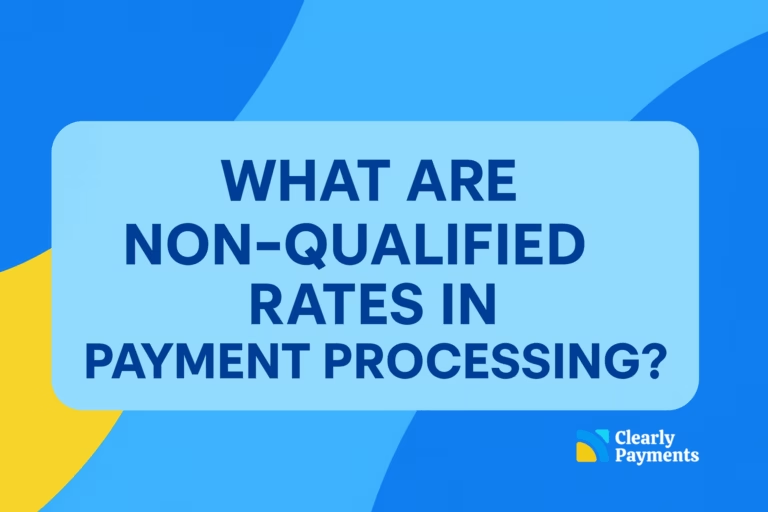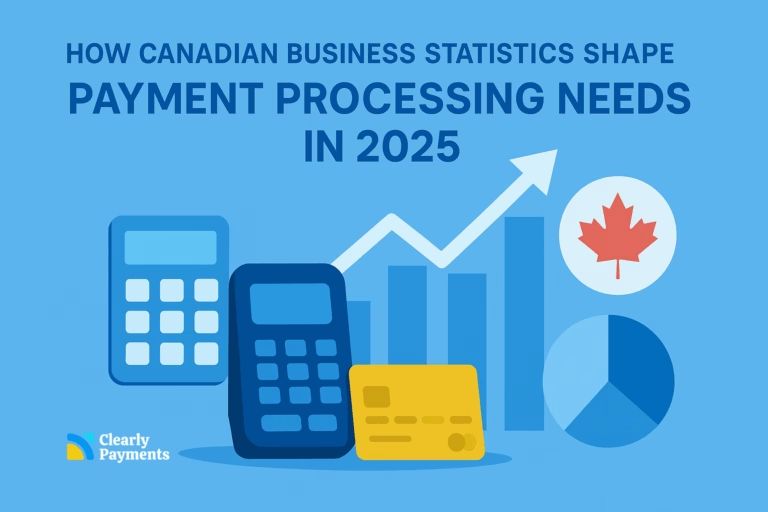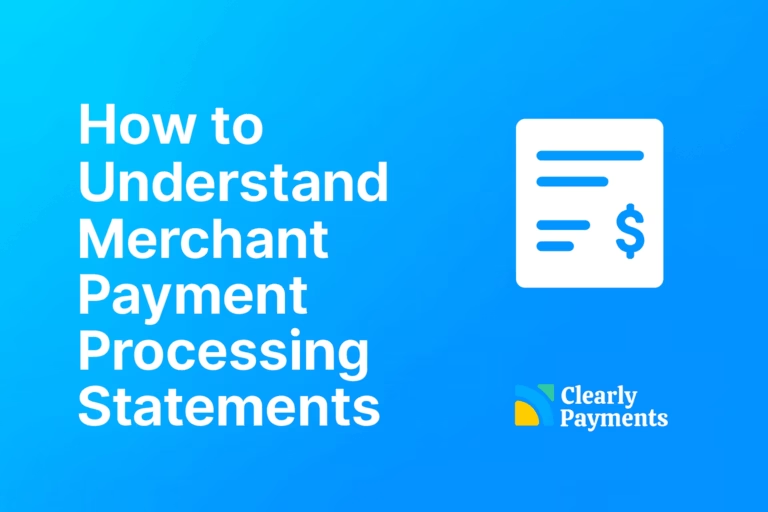Consumers expect to pay instantly, securely, and however they prefer, whether it’s a tap, a phone, or even a crypto wallet. Across North America, physical cards still dominate, but digital wallets are closing the gap fast.
This article explores the payment methods that most businesses accept in 2025, what’s driving those trends, and how merchants can prepare for the next shift in how customers pay.
How Businesses Accept Payments in 2025
The payments landscape continues to evolve at record speed. Businesses now manage multiple payment channels, in-store, online, and mobile, each with its own preferred methods and customer habits.
Here’s what’s happening overall:
- Cards remain dominant, accepted by roughly 9 out of 10 businesses in both the U.S. and Canada.
- Digital wallets are surging, now accepted by more than half of merchants.
- Cash remains surprisingly resilient, especially among small and local merchants.
- Instant and real-time payments are emerging, particularly for B2B and invoice-based businesses.
Table 1: Merchant Acceptance Rates by Payment Method (2025)
| Payment Method | U.S. Acceptance | Canada Acceptance (SMBs) | Notes / Highlights |
|---|---|---|---|
| Credit & Debit Cards | 94% (Fed Reserve) | 89% (Bank of Canada) | Cards are the backbone of payment acceptance. |
| Cash | ~80% | 96% | Cash still matters for small, in-person transactions. |
| Digital Wallets (Apple, Google, PayPal) | 57% | 49% | Wallets growing rapidly year over year. |
| Interac e-Transfer | — | 63% | A strong Canadian alternative for peer and small business payments. |
| Instant / Faster Payments | 62% of large firms use | — | Adoption is increasing in high-volume and B2B contexts. |
The Shift Toward Digital Wallets
The rise of mobile and online shopping is pushing digital wallet adoption to new heights. Apple Pay, Google Pay, PayPal, and other mobile wallets are no longer niche — they’re mainstream payment options.
In North America, digital wallets now account for 37% of e-commerce transactions, and that share is expected to surpass 50% by 2026. Younger shoppers are leading the charge, and contactless acceptance terminals have made wallet payments faster and easier than cards.
Key Wallet Trends
- 57% of small U.S. businesses accept digital wallets.
- Wallets reduce checkout friction and increase conversion rates online.
- Some merchants report 5–10% faster payment processing when customers use wallets instead of cards.
- For security-minded merchants, tokenization and biometric authentication reduce fraud risk.
Wallets are not replacing cards outright, most are built on top of card networks, but they’re changing how consumers access those cards. For merchants, wallet acceptance is a low-effort way to enhance convenience and modernize checkout.
The Role of Cash and Legacy Methods
Cash may seem like a relic in a digital age, but it remains surprisingly persistent. Especially in Canada, 96% of small and medium-sized merchants still accept cash, and 92% say they have no plans to go completely cashless anytime soon.
Cash remains important for low-value purchases, rural markets, and customers without access to credit or digital banking. Even in the U.S., around 80% of small merchants accept cash as a fallback method.
Why Cash Still Matters
- Resilience: no system outages or chargebacks.
- Cost control: no processing fees.
- Customer preference: 12% of Canadians still prefer to pay in cash.
Card Payments: Still the Foundation
Despite all the innovation, credit and debit cards remain the foundation of global payments. Nearly every business that accepts electronic payments accepts cards.
In 2025:
- 94% of U.S. merchants accept credit or debit cards.
- 89% of Canadian SMBs do the same.
- Card transactions still represent roughly one-third of e-commerce volume in North America.
| Payment Type | Share of Volume | Trend Notes |
|---|---|---|
| Digital Wallets | 37% | Expected to exceed 50% by 2026. |
| Credit Cards | 33% | Stable; primary for high-value purchases. |
| Debit Cards | 12–16% | Used heavily for day-to-day spending. |
| Bank Transfers / Local Rails | 10% | Growth led by Interac e-Transfer and open banking. |
| Cash | <10% | Declining but not disappearing. |
Card networks still dominate both online and offline transactions due to global acceptance, established trust, and reward programs that keep customers loyal.
Merchants may dislike fees, but the reliability and ubiquity of card payments make them indispensable.
Instant Payments and Bank Transfers
A growing share of businesses are experimenting with instant payments, often referred to as faster or real-time payment rails. These systems move money directly from one bank account to another in seconds, no card networks involved.
In the U.S., 62% of businesses use some form of digital wallet or instant payment rail, up from 47% the year before. In Canada, Interac e-Transfer is leading the way, now accepted by 63% of small businesses.
Why Businesses Are Interested
- Faster settlement (seconds or minutes vs. days).
- Lower fees than traditional card processing.
- Growing customer trust, especially for B2B and recurring payments.
Factors That Drive or Limit Acceptance
Every payment method brings its own mix of costs, complexity, and benefits. Merchants must weigh what’s worth offering — and when.
What Drives Adoption
- Customer demand: Consumers expect flexibility and convenience.
- Faster checkout: Wallets and tap-to-pay cut waiting time.
- Lower risk and chargebacks: Especially for tokenized or bank-linked payments.
- New technology and integration tools make setup easier than ever.
What Holds Merchants Back
- Hardware costs: Upgrading POS terminals or software.
- Transaction fees: Especially for small-ticket sales.
- Limited usage: Some new methods see low actual volume.
- Compliance and reconciliation complexity across systems.
Interestingly, many Canadian SMBs report that cost, not technology, is the main barrier to expanding payment acceptance. Businesses often wait to see proven customer demand before adding new rails.
What Merchants Should Focus on in 2025
The data makes it clear: diversity and flexibility are the keys to success in payments. Merchants who offer multiple payment options are more likely to attract repeat customers and close more sales.
Here’s what to prioritize:
- Accept cards and digital wallets: these cover over 90% of consumer transactions.
- Stay open to cash and e-transfers for local or low-tech customers.
- Experiment with instant payments for B2B or high-value transfers.
- Negotiate processing fees regularly: rates change as volumes grow.
- Keep your checkout simple: minimize friction across all channels.
Payment acceptance is no longer just an operational task, it’s a strategic choice that shapes customer experience, loyalty, and revenue. In 2025 and beyond, successful merchants are those that stay flexible, modern, and customer-centric in how they let people pay.




